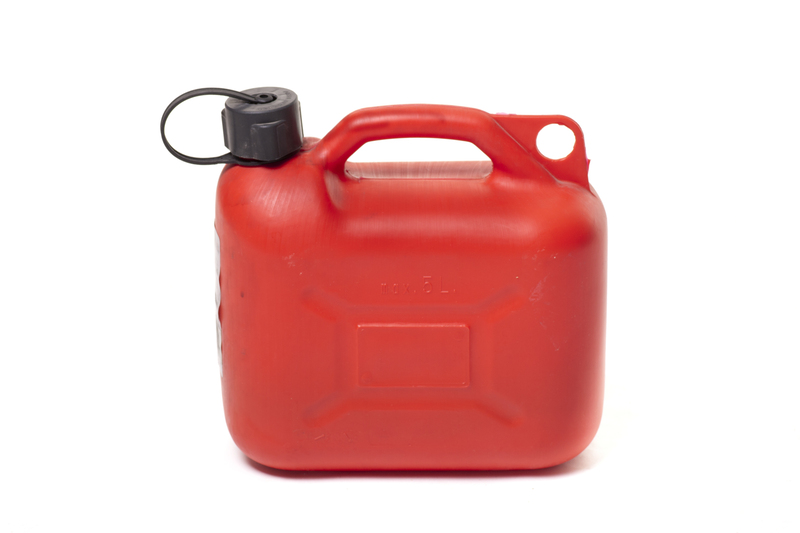Keep Sofas Pristine: Storage Tips from Industry Experts
Posted on 17/05/2025
Keep Sofas Pristine: Storage Tips from Industry Experts
Are you looking for proven ways to keep your sofas in immaculate condition, even while in storage? Whether you're moving, remodeling, or just need to free up space, properly storing your sofa ensures it remains fresh, clean, and undamaged. Experts from the furniture industry share invaluable insights on how to store sofas securely, maintain them during storage, and prolong their lifespan. Here's your comprehensive guide to pristine sofa storage.
Why Proper Sofa Storage Matters
A sofa is not just a functional piece of furniture--it's an investment. Upholstered sofas can be susceptible to moisture, dust, mold, and pests if stored incorrectly. Understanding the importance of proper sofa storage is the first step to protecting your furniture and your finances. According to industry experts, preventative storage measures significantly reduce wear, fading, and structural damage, keeping your sofa looking and feeling new for years to come.
Common Risks When Storing Sofas
- Moisture and Mold: Improper storage venues can trap humidity, leading to mildew and odor.
- Dust and Dirt: Unprotected sofas can accumulate grime that damages upholstery and fills crevices.
- Pest Infestations: Rodents and insects may find your sofa the perfect shelter and nesting spot.
- Structural Damage: Poor positioning and lack of support can warp or deform your sofa's frame and cushions.
- Fading and Discoloration: Exposure to light and fluctuating temperatures can degrade fabric and color.
To guard against these risks, following expert storage guidelines is essential.

Preparing Your Sofa for Storage
Before you move your sofa into storage, a thorough preparation routine is critical. Here's what industry experts recommend:
1. Deep Clean Your Sofa
- Vacuum Thoroughly: Use a handheld vacuum or upholstery attachment to clean every nook, including under cushions and along seams.
- Remove Stains: Treat stains with an upholstery cleaner suitable for your sofa's material.
- Let It Dry: Never store a damp sofa! Allow adequate time for drying to prevent mold.
2. Disassemble When Possible
- Remove Legs and Cushions: If your sofa design allows, detach legs, arms, and backrests to make storage easier and safer.
- Wrap and Label Parts: Use bubble wrap or durable plastic covers to protect disassembled components and label them for future reassembly.
3. Protect Your Sofa with Covers
- Use Fabric or Plastic Covers: Opt for breathable sofa storage covers to guard against dust, while allowing air flow to prevent moisture buildup.
- Avoid Tight Wrapping: Do not wrap tightly with plastic, which can trap moisture and cause condensation.
Choosing the Right Storage Environment for Sofas
The storage location you select plays a vital role in safeguarding your couch. Experts recommend the following considerations:
Climate-Controlled Storage Units
- Consistent Temperature & Humidity: Storage units with climate control prevent the growth of mold and mildew, and protect delicate fabric or leather from extreme temperature shifts.
- Enhanced Security: Such units typically offer additional security, safeguarding your sofa from theft and vandalism.
- Why It Matters: Fluctuating humidity and temperature can warp wooden frames and crack leather, leading experts to recommend climate-controlled spaces for sofa storage.
Avoid Damp and Dirty Spaces
- Basements and Garages: Unless they're professionally finished and climate controlled, these areas can harbor excess moisture and pests.
- Outdoors or Sheds: Even covered patios or garden sheds can expose your couch to weather extremes, dust, insects, and animals.
Elevate Off the Floor
- Use Pallets or Wooden Planks: Raising your sofa prevents direct contact with potentially damp concrete or floor surfaces.
- Improved Air Flow: Elevation also allows air to circulate beneath your sofa, further reducing moisture risks.
Sofa Storage Techniques: The Expert Way
Besides cleaning and choosing a storage site, the way you position and protect your sofa is crucial. Here's how to properly store a couch:
Don't Stack Items on Your Sofa
- Avoid Deformation: Heavy or sharp items placed on top can damange fabric, crush cushions, and warp the frame.
- Maintain Shape: Store cushions separately in breathable covers or containers.
Allow Ample Space Around Your Sofa
- Prevent Scratches and Dents: Don't cramp your sofa against hard surfaces, walls, or other furniture in the storage unit.
- Promote Airflow: Good space allows the sofa to 'breathe' and stay free of odor and mold.
Support Your Sofa's Structure
- Placing Upright: Always store sofas in their natural, upright position to avoid strain on joints and cushions.
- Frame Protection: For delicate or antique pieces, consider reinforcing weak points with additional padding or support brackets.
Expert Advice for Special Sofa Materials
Leather Sofas
- Condition Before Storing: Apply a leather conditioner to prevent drying and cracking during storage.
- Avoid Direct Sunlight: Prevent fading by covering your leather sofa and keeping it away from windows.
- Breathable Covers: Use only breathable fabric covers, as plastic can trap moisture and ruin leather.
Fabric and Velvet Sofas
- Dust-Resistant Covers: Opt for cotton or linen covers that shield the sofa but allow airflow.
- Avoid Overstuffing: Do not crowd velvet or delicate fabric sofas in small spaces, as squishing causes permanent marks or deforms the nap.
Protecting Sofas from Pests in Storage
- Inspect the Storage Unit: Ensure the site is clean and free of pest activity before moving in your sofa.
- Use Repellents: Place natural repellents, like cedar blocks or lavender sachets, nearby to deter moths and rodents.
- Seal Entry Points: Block cracks and gaps to prevent pests from entering the storage area.
Long-Term Sofa Storage Maintenance
Regular Inspections
- Schedule Routine Checks: Visit your storage unit every few months to inspect your sofa's condition.
- Look for Mold and Mildew: Address any signs of moisture promptly to avoid permanent damage.
- Air Out Periodically: If safe, briefly lift the cover and allow the sofa to air out to deter musty odors.
Keep Storage Area Clean
- Vacuum and Dust: Remove dust and debris from the storage area to minimize risks to your sofa.
- Control Humidity: Use moisture absorbers like silica gel packs or dehumidifiers if needed.
FAQs: Keeping Your Sofa Pristine During Storage
How Long Can You Store a Sofa?
With the right storage conditions--a controlled environment, regular inspection, and protective covers--sofas can be stored for several months or even years without degradation. However, regular maintenance and care are key to longevity.
Is It Okay to Store Sofas Vertical?
Industry experts highly recommend storing sofas in their natural upright position. Storing a sofa on its side or back can strain joints, damage legs, and alter cushion shapes, leading to permanent structural damage.
Should I Use Plastic Wrap for My Sofa?
While plastic covers shield against dust, avoid wrapping tightly, especially for leather and fabric sofas. Tight plastic can restrict airflow and trap moisture, fostering mold growth. Choose breathable covers specifically made for sofa storage for optimal results.
Expert Storage Accessories for Sofa Protection
- Furniture Blankets and Pads: Thick, padded covers protect against knocks and scratches during transport and storage.
- Desiccants: Silica gel packs or charcoal bags obscure moisture and prevent mold, keeping sofas fresh.
- Slipcovers: Specialty slipcovers designed for sofa storage add an extra layer of protection against dust and pests.
- Furniture Feet Protectors: Rubber or wooden pads prevent direct contact with the ground, guarding against dampness and abrasion.

Unpacking and Restoring Your Sofa After Storage
Once you're ready to use your sofa again, follow these expert restoration steps:
- Remove Covers Carefully: Unwrap your sofa, noting any signs of moisture or pest activity.
- Inspect and Clean: Vacuum the entire sofa and use an appropriate cleaner to refresh upholstery or leather.
- Check for Damage: Ensure joints, frames, and cushions are intact, fixing any issues promptly.
- Allow to Air Out: Place the sofa in a well-ventilated room for a few hours before sitting or reassembling.
Final Thoughts: Keeping Sofas Pristine in Storage
Maintaining a pristine sofa during storage doesn't have to be challenging. With the right preparation, environment, and ongoing care, your investment will stay looking its best for years. Take the advice of furniture industry experts--from choosing climate-controlled storage to using the proper covers and maintaining regular checks--to ensure your sofa emerges from storage in perfect condition.
By following these expert sofa storage tips, you enhance the longevity, appearance, and comfort of your favorite piece of furniture. Remember, a little care goes a long way in keeping your sofa pristine, saving you time and money on repairs or replacement down the road.
Ready to store your sofa with confidence? Apply these industry-approved strategies and enjoy peace of mind, knowing your furniture remains in pristine condition until you need it again.



